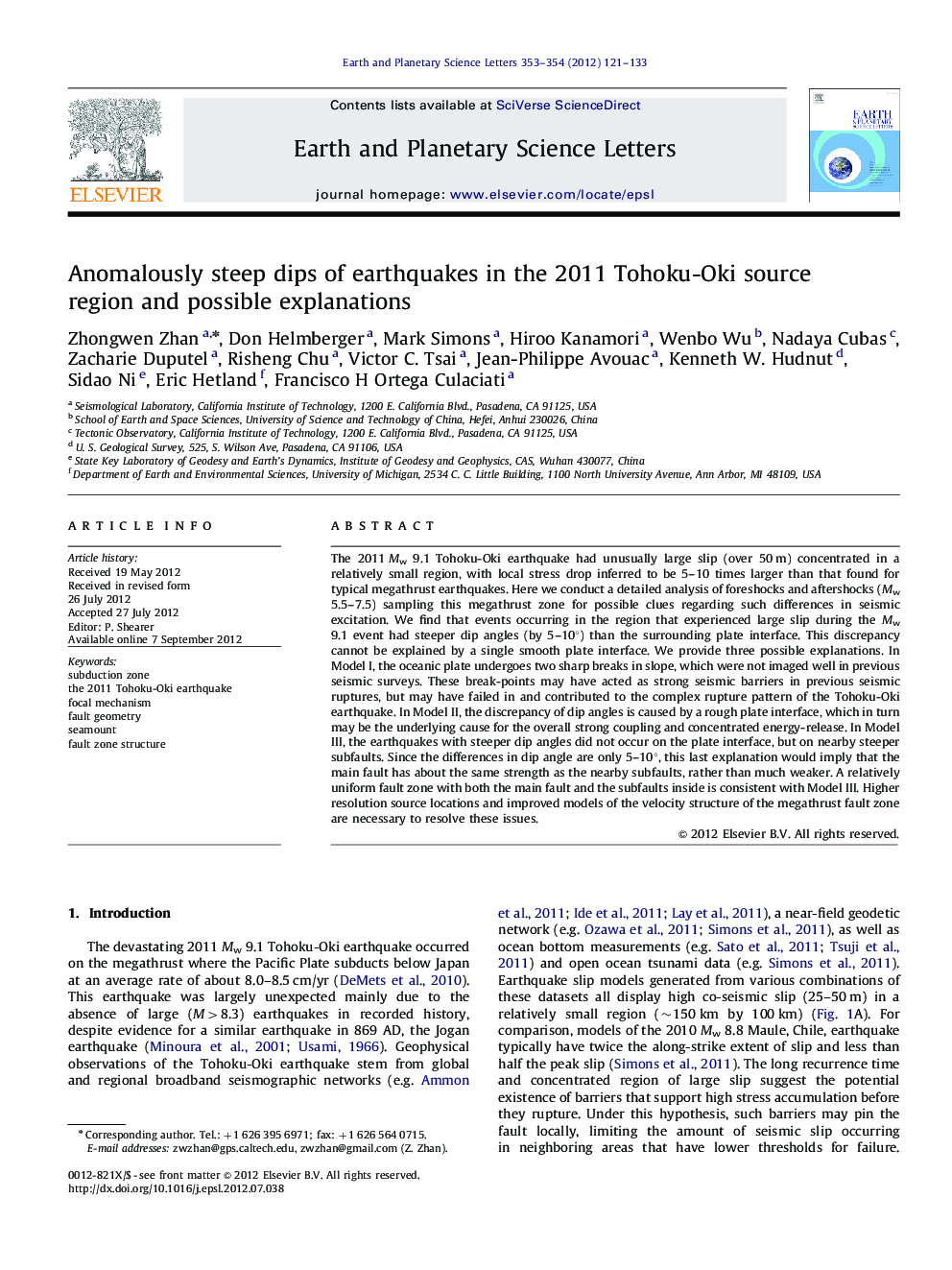| Article ID | Journal | Published Year | Pages | File Type |
|---|---|---|---|---|
| 6430482 | Earth and Planetary Science Letters | 2012 | 13 Pages |
The 2011 Mw 9.1 Tohoku-Oki earthquake had unusually large slip (over 50 m) concentrated in a relatively small region, with local stress drop inferred to be 5-10 times larger than that found for typical megathrust earthquakes. Here we conduct a detailed analysis of foreshocks and aftershocks (Mw 5.5-7.5) sampling this megathrust zone for possible clues regarding such differences in seismic excitation. We find that events occurring in the region that experienced large slip during the Mw 9.1 event had steeper dip angles (by 5-10°) than the surrounding plate interface. This discrepancy cannot be explained by a single smooth plate interface. We provide three possible explanations. In Model I, the oceanic plate undergoes two sharp breaks in slope, which were not imaged well in previous seismic surveys. These break-points may have acted as strong seismic barriers in previous seismic ruptures, but may have failed in and contributed to the complex rupture pattern of the Tohoku-Oki earthquake. In Model II, the discrepancy of dip angles is caused by a rough plate interface, which in turn may be the underlying cause for the overall strong coupling and concentrated energy-release. In Model III, the earthquakes with steeper dip angles did not occur on the plate interface, but on nearby steeper subfaults. Since the differences in dip angle are only 5-10°, this last explanation would imply that the main fault has about the same strength as the nearby subfaults, rather than much weaker. A relatively uniform fault zone with both the main fault and the subfaults inside is consistent with Model III. Higher resolution source locations and improved models of the velocity structure of the megathrust fault zone are necessary to resolve these issues.
⺠We study earthquakes sampling the source area of the Tohoku-Oki earthquake. ⺠Their locations and focal mechanisms cannot be explained by a simple megathrust. ⺠The megathrust could have a complicated geometry, hence be more strongly coupled. ⺠Or the interface could be a thick fault zone with megathrust and steep subfaults
